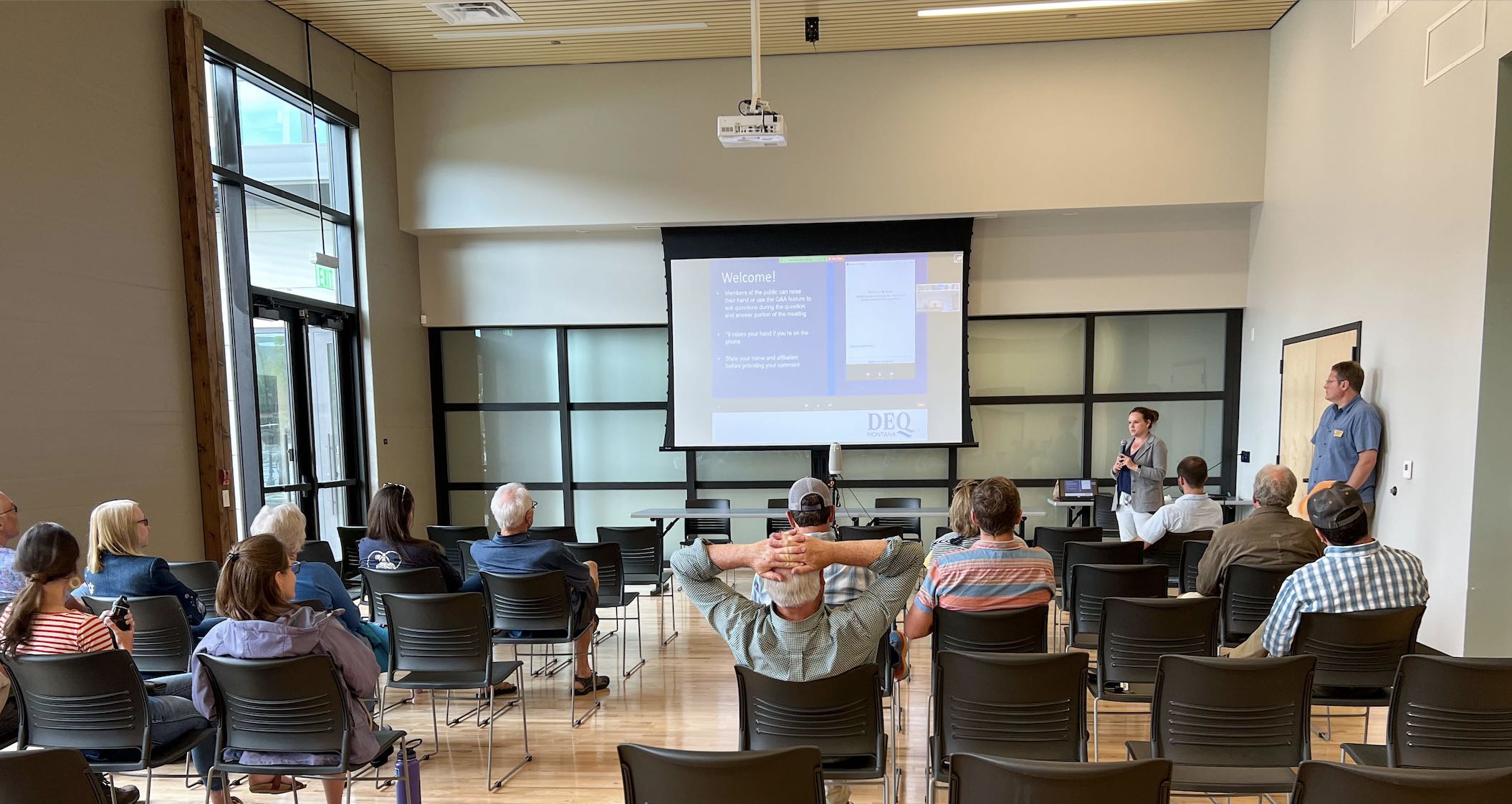By Gabrielle Gasser ASSOCIATE EDITOR
BIG SKY – After announcing a preliminary finding in June that the middle segment of the Gallatin River is impaired by algal blooms, the Montana Department of Environmental Quality is gathering public comment and preparing for the next steps in the listing process.
On July 14, DEQ hosted a public meeting in Big Sky to present data from the assessment that led to the Category 5 impairment designation under the federal Clean Water Act. The public comment period, which opened on June 20, closes on Aug. 22, at which point DEQ will review the comments and make any necessary updates to the assessment.
The listing decision found that two beneficial uses of the Gallatin River are not fully supported—aquatic life and recreation, said DEQ’s Darrin Kron at the July 14 meeting. Kron is the monitoring and assessment section supervisor of the Water Quality Planning Bureau. The pollutant in the listing, according to Kron, is the nuisance algal blooms that have been affecting the Gallatin for years and worsened significantly in 2018.
The impairment listing will then move to the federal level where the U.S. Environmental Protection Agency will have the final authority to approve or deny the listing or ask for further clarification.
If the listing is approved, the DEQ will then conduct further monitoring of the river to better understand what is causing the problem.
“The next two to three years we’ll really be trying to understand what’s going on,” said TMDL Section Supervisor with DEQ Andy Ulven. “We’re seeing the response variables; We’re seeing the algal growth that is higher than it should be if we’re looking at our standards.”
Once the data has been collected, the process could go one of two ways: development of Total Maximum Daily Loads, which define the amount of certain pollutants a waterbody can hold without impacts to water quality and beneficial uses, or a change in water quality standards for the
Gallatin River.
Both Kron and Ulven emphasized that the impairment listing is for algae rather than nutrients since data shows the Gallatin is not exceeding current nutrient thresholds.
Ulven added that nutrients are a major factor in algal growth along with temperature, increased sunlight and reduced shade from streamside vegetation. This is why further monitoring is so important, he said, because it will help DEQ determine the cause of the algae blooms and its source.
Ulven said if the data points to the need for Total Maximum Daily Loads it would trigger a two- to six-year process to develop TMDLs for multiple pollutants as well as further public comment and approval from the EPA.
“It is a long process, unfortunately, with environmental studies,” said Kristin Gardner, chief executive and science officer with the Gallatin River Task Force, a local nonprofit dedicated to conserving the Gallatin. “You can’t just collect one or two years of data because there’s so many variables that can influence the results you’re seeing in the stream.”
Gardner said the task force has collected many years of data on the Gallatin but nothing that was specifically targeted at developing TMDLs or new standards for the river.
In the meantime, Gardner said the task force will continue monitoring efforts on the river as well as work to advance several nutrient reduction projects. She added there is already plenty of work being done in the Big Sky community to address the issues on the Gallatin.
Some examples of this work the task force is executing to reduce nutrients and temperature in the river include its trout friendly landscaping program and restoration projects like the recent work on the river access site at Deer Creek. Gardner noted that community efforts to reduce nutrients in the Gallatin include connecting the Gallatin Canyon area of Big Sky to centralized wastewater treatment as well as the upgrade of the current wastewater treatment plant.
Task force staff, aided by volunteers, will conduct algae monitoring the weeks of Aug. 1 and Aug. 29. Gardner encouraged Big Sky residents to stay engaged as efforts to reduce nutrients in the Gallatin continue and directed the community to opportunities to submit public comment as the DEQ listing process moves forward.














